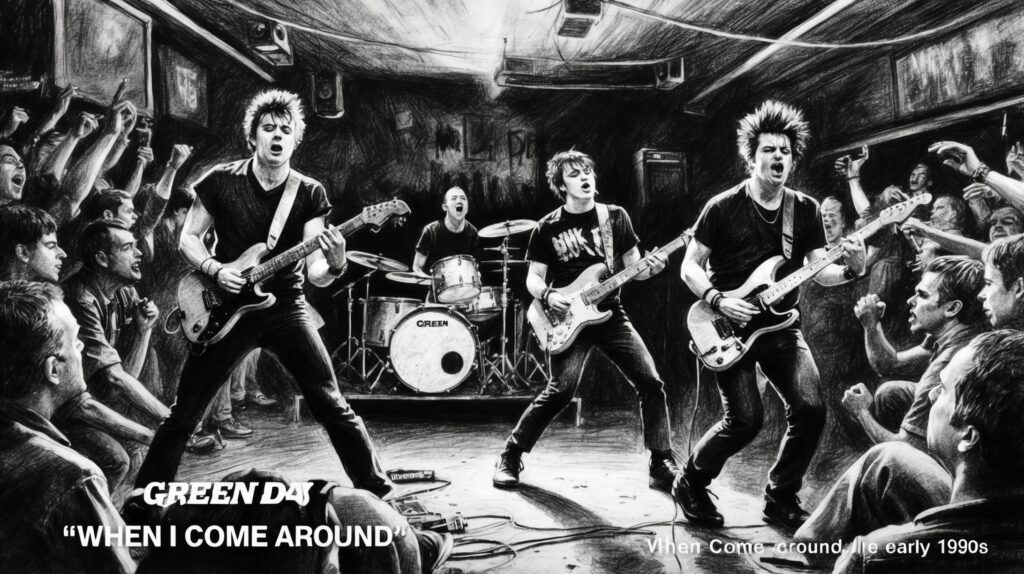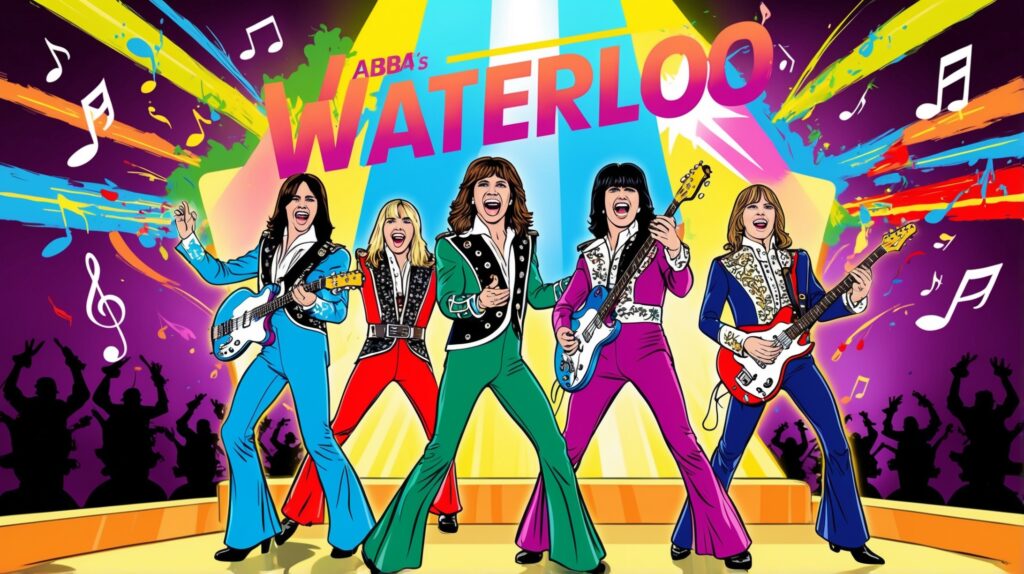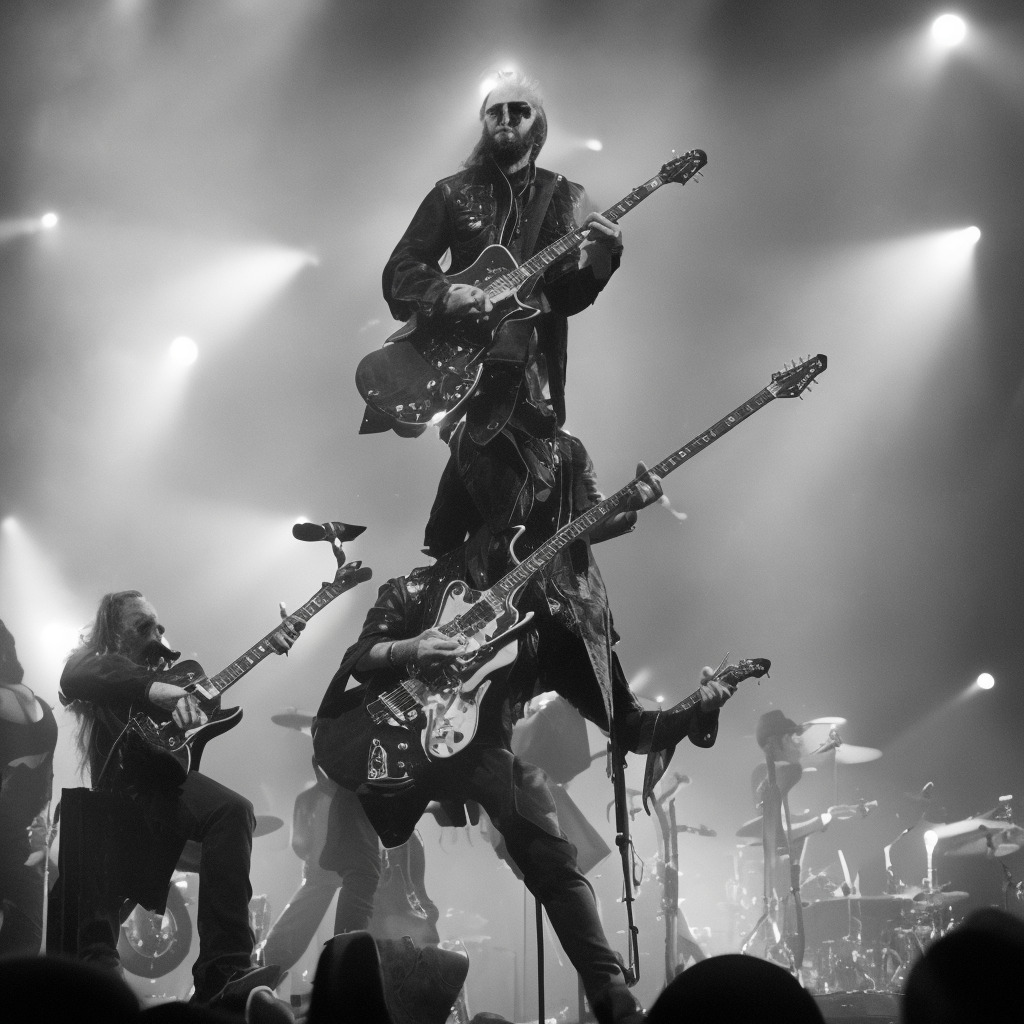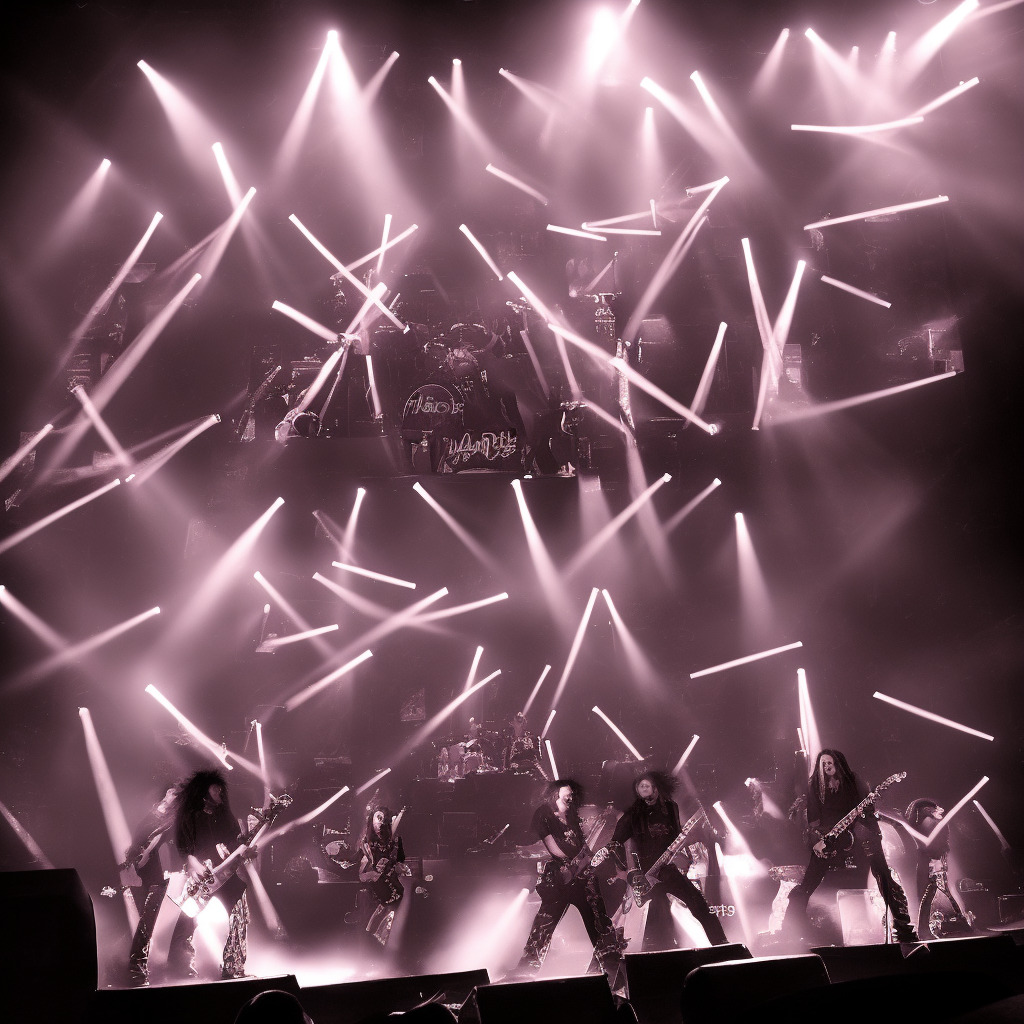Green Day: Punk Rock Pioneers and ‘When I Come Around’
Discover Green Day’s journey, from their early days in California’s punk scene to their breakout success with ‘When I Come Around’ in 1994. Learn about the band members’ backgrounds and their impact on modern punk rock.

Green Day, the iconic punk rock band hailing from California, is widely recognized for revolutionizing the modern punk scene. Formed in 1987, the band’s line-up of Billie Joe Armstrong, Mike Dirnt, and Tré Cool brought a dynamic new energy to the genre. By the time they released ‘When I Come Around’ in 1994, Green Day had already started carving their niche in the global music landscape, catalyzing a new wave of punk rock and influencing countless bands that followed.
The early life of Green Day’s members was intertwined with the punk subculture, growing up in the spirited scenes of California’s East Bay. This rich backdrop of underground punk venues and ‘do it yourself’ ethos nurtured their music ethos. Armstrong and Dirnt, who became friends in childhood, initially formed the band Sweet Children before transitioning to Green Day. With Tré Cool joining as the drummer, the trio found their defining sound and attitude that would captivate a generation.
The release of ‘Dookie’, the album on which ‘When I Come Around’ was featured, marked a pivotal moment in Green Day’s career. By then, the band had refined their musical style, incorporating sharp lyrics with catchy melodies while maintaining their punk roots. The era around ‘When I Come Around’ was characterized by Green Day’s growing influence on the music scene, supported by collaborations with notable producers that helped shape their distinctive sound. The song’s introspection and radio-friendly hooks distinguished it from typical punk anthems, cementing its place in the annals of rock history.
Billie Joe Armstrong: The Creative Force Behind Green Day’s Hits
Explore the background of Billie Joe Armstrong, the driving force behind Green Day’s music, his influences, collaboration style, and the pivotal role he played in crafting ‘When I Come Around.’

When discussing the composition of “When I Come Around,” it’s impossible not to spotlight Billie Joe Armstrong, the primary composer of the track. Born on February 17, 1972, in Oakland, California, Armstrong co-founded Green Day with Mike Dirnt, allowing him to kickstart his iconic musical career. From a young age, music was in Armstrong’s blood, as he recorded his first song at just five years old. Over the years, his upbringing in the punk scene around California profoundly influenced his musical journey, giving his work a distinct edge and authenticity that resonates with fans worldwide.
Billie Joe Armstrong’s musical style is a fusion of punk rock savvy combined with an instinct for catchy, anthemic melodies. His influences span from classic punk bands like The Ramones and The Clash to rock legends such as The Beatles and The Who. These diverse inspirations have culminated in a signature style that’s both energized and melodically accessible, qualities clearly present in “When I Come Around.” Armstrong’s knack for translating his life experiences and introspective lyrics into music helps bridge the gap between edgy punk and mainstream appeal.
While “When I Come Around” stands as a testament to Armstrong’s prowess, his collaborations with Green Day’s drummer Tré Cool and bassist Mike Dirnt cannot be overlooked. This triad has created a synergy that defines Green Day’s sound. Through rhythmic precision and tight harmonies, the band together crafts a soundscape that supports Armstrong’s narrative style in “When I Come Around.” His role in the composition involves molding raw punk energy into structured melodies, which is a cornerstone of this song’s success. Armstrong’s unique blend of introspective lyrics and dynamic music composition played a pivotal role in establishing “When I Come Around” as an enduring classic, carving a niche in the annals of punk-rock history.
Acclaim and Influence: The Legacy of ‘When I Come Around’
“When I Come Around” by Green Day is celebrated for its critical acclaim and wide influence, contributing to the Grammy-winning success of the Dookie album. The track has been covered by various artists, featured in video games like Rock Band, and continues to resonate throughout popular culture.

Green Day’s iconic track “When I Come Around” not only enjoyed commercial success but also garnered immense critical acclaim, cementing its place as a timeless anthem of the 1990s. While the song didn’t specifically win individual awards, it contributed significantly to the band’s accolades at the time, particularly with the success of the Dookie album. Dookie won the Grammy for Best Alternative Music Album in 1995, an acknowledgment that underscored the strength of tracks like “When I Come Around.” The song’s widespread appeal helped solidify Green Day’s position in the punk rock revival sweeping through the decade.
The song’s popularity led to numerous covers by various artists, each offering a fresh take while maintaining the core essence that made the original so beloved. One of the most notable covers came from the pop-punk band State Champs, who paid homage to the track in a celebration of its influence on their musical journey. The song’s catchy riffs and relatable lyrics resonated across genres, prompting diverse interpretations from acoustic renditions to full-band rearrangements.
“When I Come Around” also found its way into popular culture through appearances in television, film, and video game soundtracks. Its most notable inclusion was in the video game Rock Band, where fans could play along to this Green Day classic. The revival of the song through such media continued to introduce it to new generations, ensuring its lasting relevance and continued appreciation.
Ascending the Musical Charts: ‘When I Come Around’ Makes Waves
Green Day’s ‘When I Come Around’ climbed the charts swiftly, peaking at number 6 on the Billboard Hot 100 Airplay chart. The song solidified the band’s rise in the music industry, influencing the 90s punk rock revival and leaving a lasting mark on popular culture.

Green Day’s ‘When I Come Around’ is a track that managed to capture the spirit of the 90s alternative rock scene while charting its own soaring path to success. Released as the fourth single from their third studio album, Dookie, on January 31, 1995, the song quickly proved to be a commercial triumph. Its initial entry point was respectable, but it didn’t take long for it to peak at number 6 on the Billboard Hot 100 Airplay chart, making it one of Green Day’s highest-charting hits at the time.
In terms of comparative chart performance, ‘When I Come Around’ stood alongside other major tracks of the era, holding its own with a fluid melody and everyman lyrics that resonated deeply with listeners. Within the band’s broader career, this single solidified Green Day’s position in the music industry, building on the momentum of previous hits like ‘Longview’ and ‘Basket Case’ and marking their definitive rise to mainstream fame.
The song’s impact extended beyond just financial popularity. It helped lay the foundation for Green Day’s seminal influence on the punk rock revival of the 1990s. The blend of aggressive marketing strategies and consistent radio airplay ensured its pervasive presence. Public and critical reception was overwhelmingly positive, further cementing its status as a pivotal track of its time. Over the years, ‘When I Come Around’ became emblematic of Green Day’s blend of punk energy and pop sensibilities, influencing countless artists and leaving an indelible mark on popular culture.
Exploring the Visuals and Impact of ‘When I Come Around’
The music video for ‘When I Come Around’ captures Green Day’s essence with its simple and engaging portrayal of San Francisco life, contributing to the song’s popularity.

Released in January 1995, the music video for ‘When I Come Around’ by Green Day captures the essence of youthful introspection and urban wanderlust. Filmed in the Mission District of San Francisco, the video features the band members – Billie Joe Armstrong, Mike Dirnt, and Tré Cool – ambling through the city streets, visiting various spots that showcase the grunge and alternative rock vibes synonymous with the 90s. The spontaneous and free-spirited nature of the video aligns with the theme of the song, which discusses navigating relationships and emotions.
Directed by the renowned filmmaker Mark Kohr, who has worked with other top artists like Smash Mouth and No Doubt, the video steers clear of elaborate plots or dramatics, instead opting for a casual documentary-style approach. This direction allows fans to focus on both the band’s genuine personalities and the raw energy of the music, a factor that played a crucial part in cementing Green Day’s authenticity during their rise to fame.
The music video was well-received at the time of its release and has since become iconic among fans of Green Day and alternative rock. Its simple yet effective storytelling, coupled with the engaging visuals of San Francisco’s urban landscapes, helped boost the song’s popularity. The video itself embodies the DIY ethos of the punk rock scene, resonating with viewers through its relatability and down-to-earth appeal. Though there are no celebrity cameos, the vibrant depiction of band camaraderie has become a beloved aspect, contributing significantly to their lasting connection with audiences.
Anatomy of ‘When I Come Around’: Crafting a Punk Anthem
When I Come Around’ blends catchy melodies with punk rock energy, showcasing Green Day’s transition into mainstream rock. Key of E♭ major, driven by electric guitar and steady rhythm.

‘When I Come Around,’ one of Green Day’s most iconic tracks, showcases a distinct musical structure that contributes to its enduring appeal. Written in the key of E♭ major, the song follows a straightforward yet effective chord progression consisting primarily of G♯, C♯, E♭, and A♭. This progression lends the track its catchy, earworm quality, underpinned by a brisk tempo of around 96 beats per minute. The track is emblematic of the band’s punk rock roots, with a clear and driving rhythm that’s accessible yet retains a sense of raw energy.
The melody of ‘When I Come Around’ is characterized by its memorable hooks and anthemic quality. Billie Joe Armstrong’s vocal delivery adds an emotional depth, with harmonies that subtly enhance the main melody without overshadowing it. The repetition of the chorus aids in cementing the song in the listener’s mind, contributing to its staying power over the decades. Instrumentally, the song is driven by the classic punk rock ensemble: electric guitar, bass, and drums. The guitar work, prominent throughout the track, features power chords and a crisp tone that cuts through the mix, while the bass provides a solid foundation, and the drums offer a tight, steady backbeat that propels the song forward.
In the broader context of Green Day’s discography, ‘When I Come Around’ represents a pivotal moment in the band’s evolution. Prior to ‘Dookie,’ their third studio album, Green Day was primarily associated with the underground punk scene. However, this track—alongside others from the album—marked their breakthrough into mainstream rock. Compared to their earlier work, ‘When I Come Around’ exhibits a polish and refinement in production, courtesy of producer Rob Cavallo, that signaled the band’s transition into more accessible and widespread sound. Interestingly, the recording sessions for ‘Dookie’ at Fantasy Studios in Berkeley, California, were noted for their efficiency, capturing the band’s energy and spontaneity without excessive overdubbing or post-production.
Dissecting the Core: Structural Dynamics of ‘When I Come Around’
When I Come Around’ embodies a masterful fusion of simple yet effective musical structures, engaging melodies, and dynamic instrumentation that marks a significant evolution in Green Day’s stylistic journey.

‘When I Come Around’ boasts a musical structure that’s both simple and strikingly effective, a testament to Green Day’s knack for crafting enduring rock anthems. The song is written in the key of E major, a choice that contributes to its uplifting and anthemic quality. The chord progression is relatively straightforward, dominated by powerful, driving chords that evoke a sense of momentum and urgency. This song is built around a classic pop-punk chord sequence that utilizes E, G#, C#m, and A, establishing a robust foundation that fuels its energetic core.
The tempo of the song is moderately paced at around 96 beats per minute, which provides a laid-back yet engaging rhythm. This tempo, combined with a 4/4 time signature, gives ‘When I Come Around’ its accessible and catchy vibe. The melody of the song is woven seamlessly with the harmony, creating a dynamic interplay between lead vocals and instrumental backing that underscores the song’s thematic ethos of self-assurance and emotional reconciliation.
Instrumentation in ‘When I Come Around’ is emblematic of Green Day’s characteristic sound. Anchored by Billie Joe Armstrong’s gritty guitar work, Mike Dirnt’s melodic basslines, and Tré Cool’s punchy drumming, the track exhibits a well-balanced sonic texture. The guitar riffs imbue the song with its distinctive hook, while the tight rhythm section propels it with unyielding pulse and clarity.
In the context of Green Day’s discography, ‘When I Come Around’ represents the maturation of their musical style as they transitioned from their earlier raw punk offerings to more polished compositions. Compared to tracks from ‘Kerplunk’ and ‘Dookie’, ‘When I Come Around’ reflects a middle ground in thematic complexity and musical refinement, paving the way for more evolved works such as those found in later albums like ‘American Idiot’. The song’s recording at Fantasy Studios also holds its own interesting story, as the band capitalized on an innovative atmosphere fostered by producer Rob Cavallo, known for harnessing the band’s raw energy into disciplined soundscapes.
Exploring the Emotional Resonance and Narrative of ‘When I Come Around’
Delve into ‘When I Come Around,’ a track that seamlessly blends personal reflection with punk rock ethos through its evocative lyrical themes and narrative techniques.
All the way across town
You’ve been searching for that someone, and it’s me out on the prowl
As you sit around feeling sorry for yourself
Well don’t get lonely now
And dry your whinin’ eyes
I’m just roaming for the moment, sleazin’ my backyard, so don’t get
So uptight, you’ve been thinking about ditching me
No time to search the world around
‘Cause you know where I’ll be found
…
******* This Lyrics is NOT for Commercial use *******

Green Day’s ‘When I Come Around’ serves as a testament to the band’s ability to capture the raw essence of youthful angst and relationship disillusionment. Released during the mid-1990s, a transformative period for punk rock, this track offers a narrative steeped in introspective reflection and a search for personal connection. The themes are arguably personal and romantic, resonating with an audience that has likely experienced similar emotions of longing and self-discovery. The zeitgeist of its era—defined by the pursuit of identity amidst shifting social norms—imbues the lyrics with a cultural relevance that persists today.
The narrative unfolds through a first-person perspective, heightening the personal nature of the song. This storytelling choice invites listeners to step into the shoes of the narrator, who is both searching for and simultaneously questioning their place in a relationship. This perspective plays a crucial role in conveying the song’s emotional weight, offering an introspective look at love’s complexities. The familiar punk ethos of introspection and rebellion is cleverly intertwined, creating a dialogue between personal doubt and self-assuredness.
From a literary standpoint, the song employs a straightforward yet poignant use of language, marked by Green Day’s characteristic wordplay and rhyme schemes that enhance its lyrical quality. Notable is the use of metaphoric expressions such as ‘sleazin’ my backyard,” which injects a relatable, colloquial feel. These elements collectively enhance the narrative, allowing listeners to connect deeply with the sentiments expressed. Comparatively, the song shares thematic undercurrents with other tracks like ‘Longview,’ both addressing themes of isolation and self-exploration. This connection solidifies its place within the larger tapestry of Green Day’s body of work, where personal struggle meets universal appeal.
🎸 Did you know? When I Come Around almost didn’t make the cut on Green Day’s album ‘Dookie’! Thankfully, it did and rocked the 90s! 🤘 #GreenDay #WhenIComeAround #PunkRockTrivia #90sMusic 🔥 tinyurl.com/ymbs9bxc
Click to Tweet







